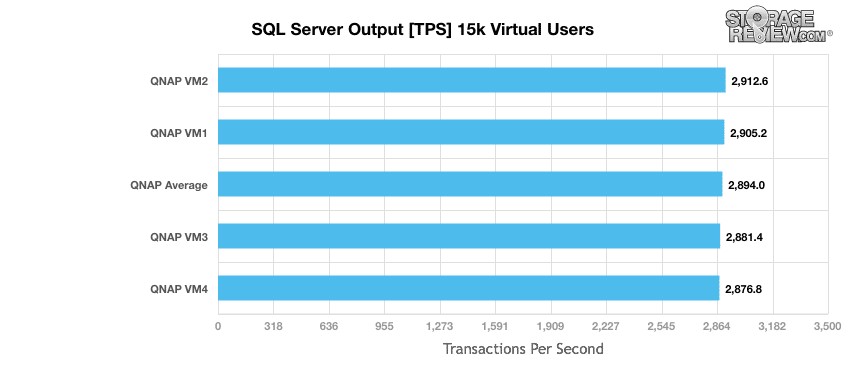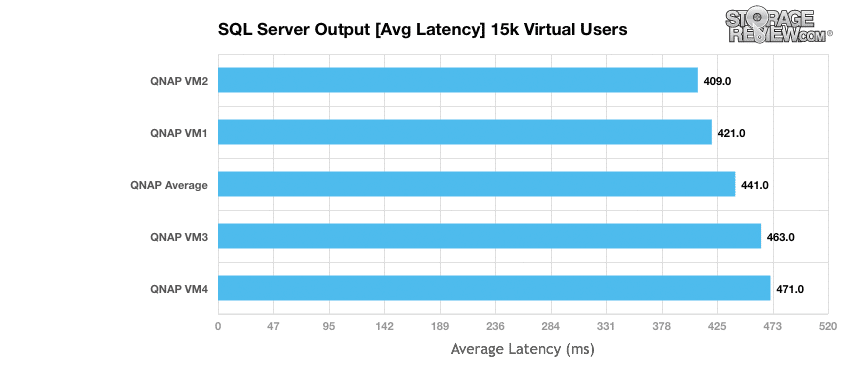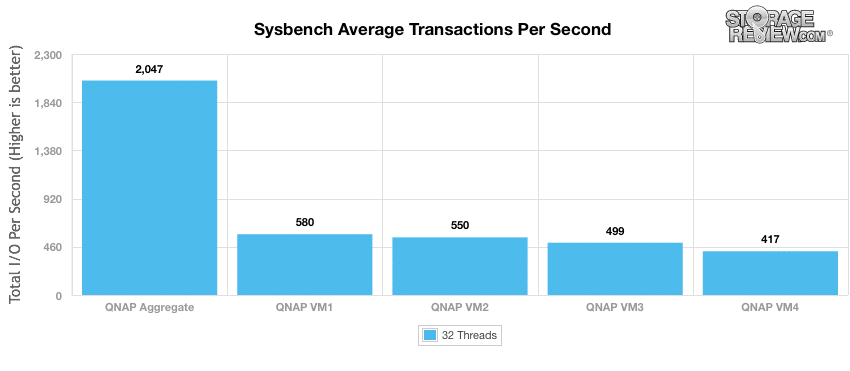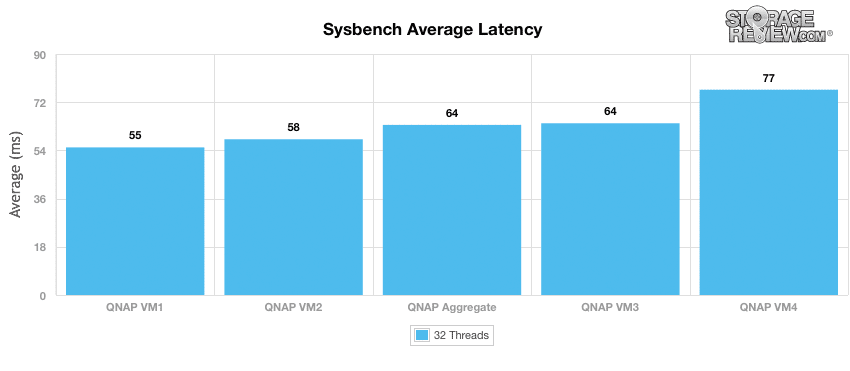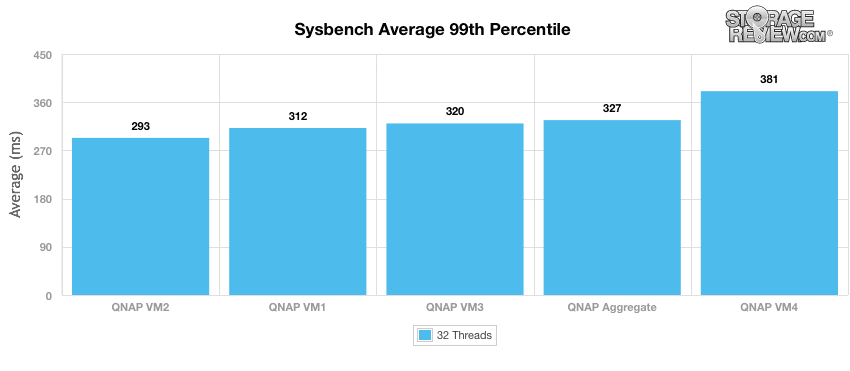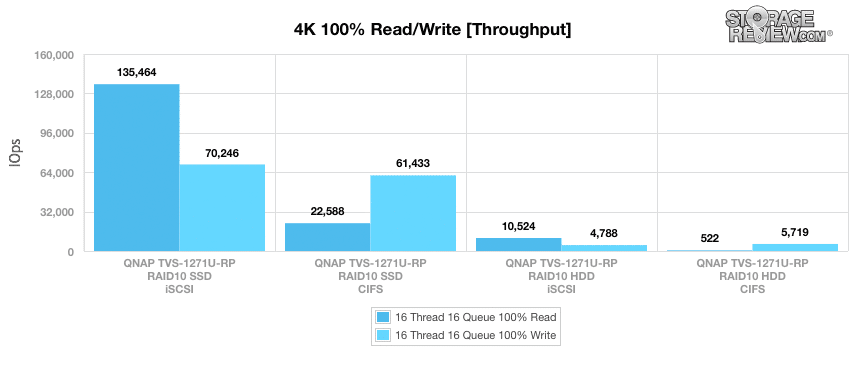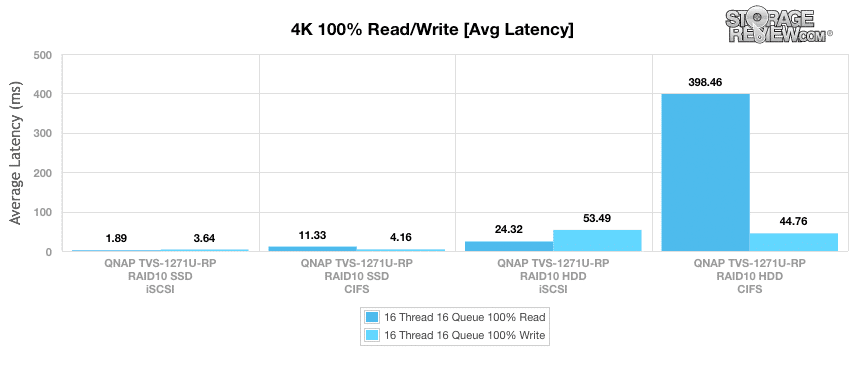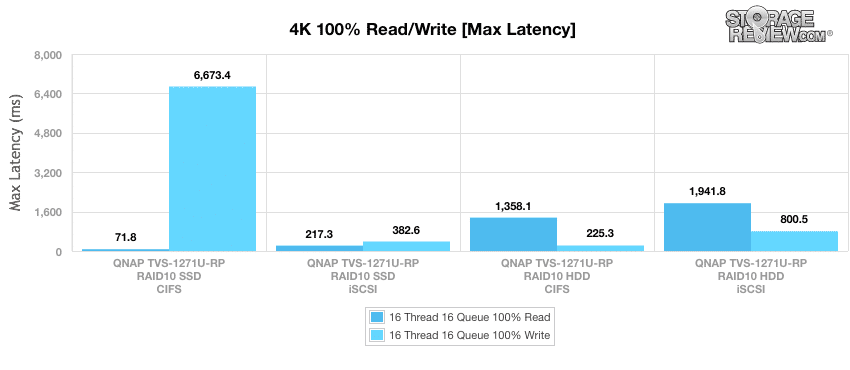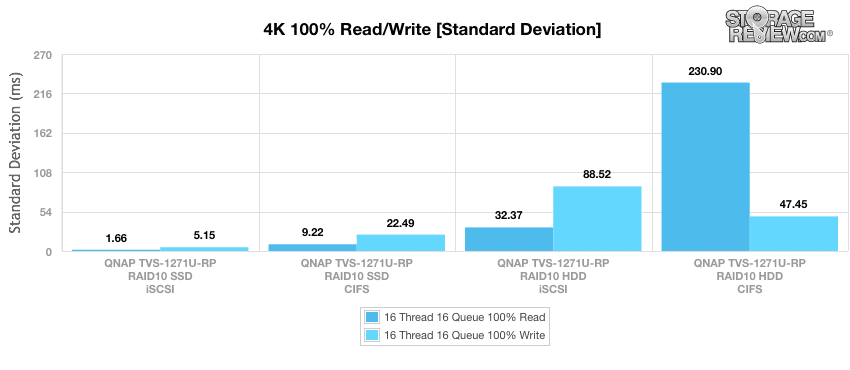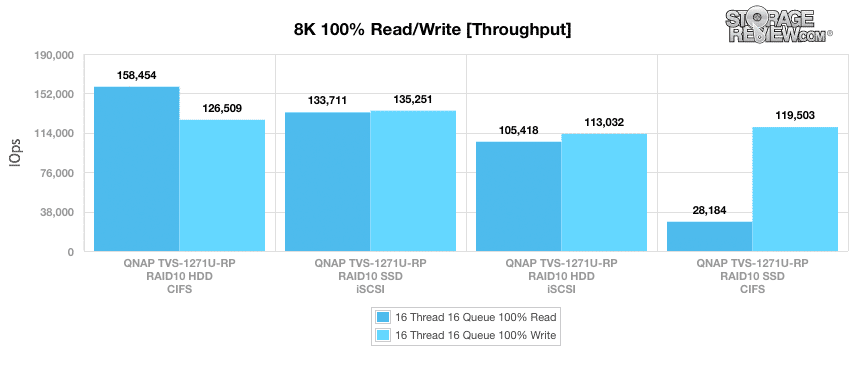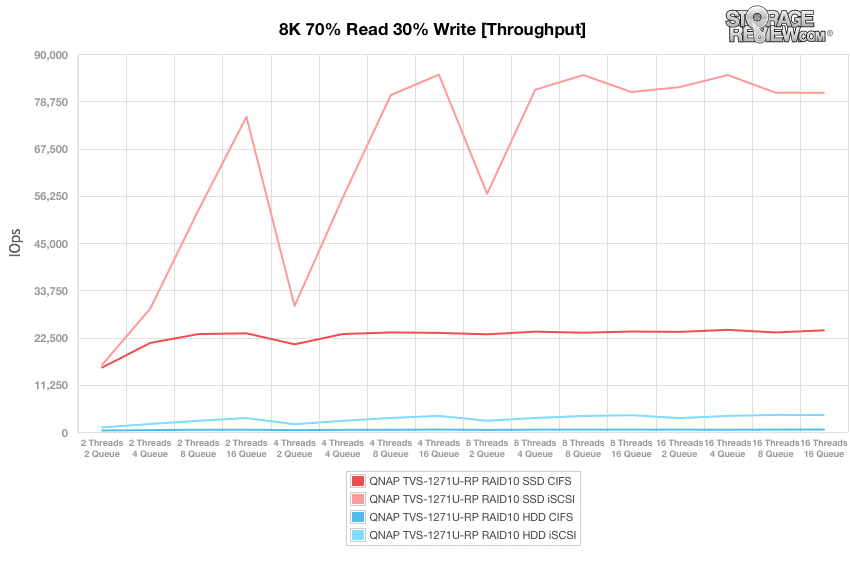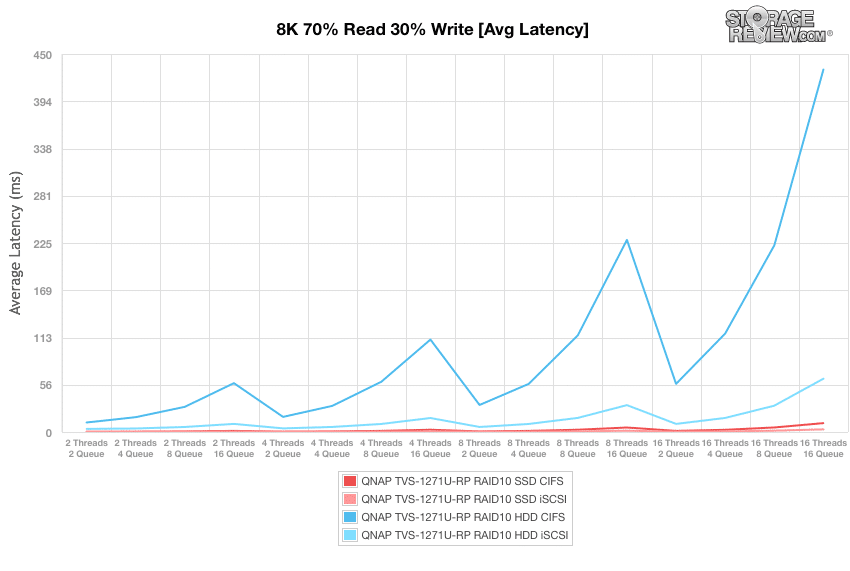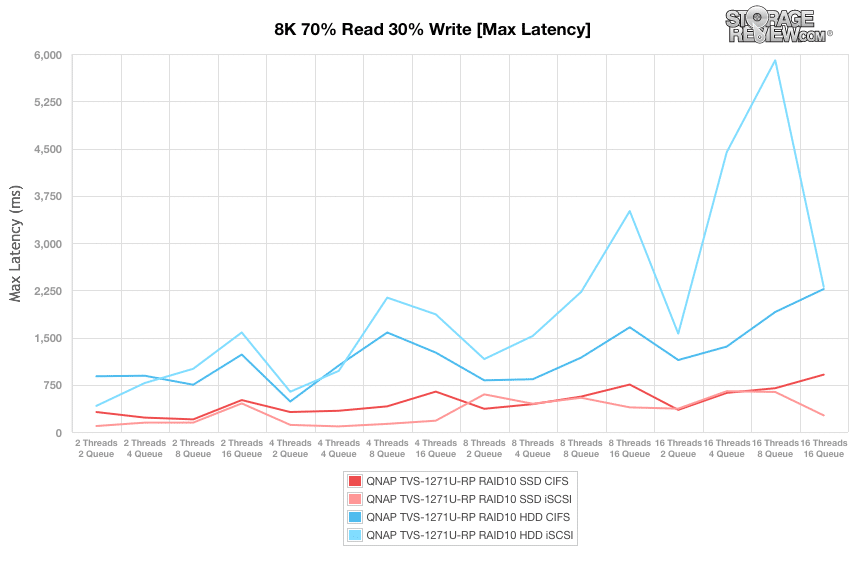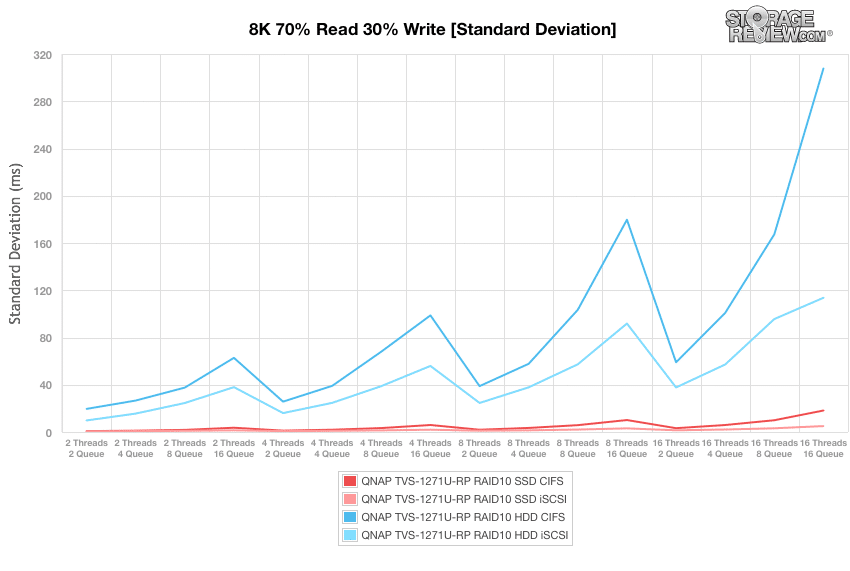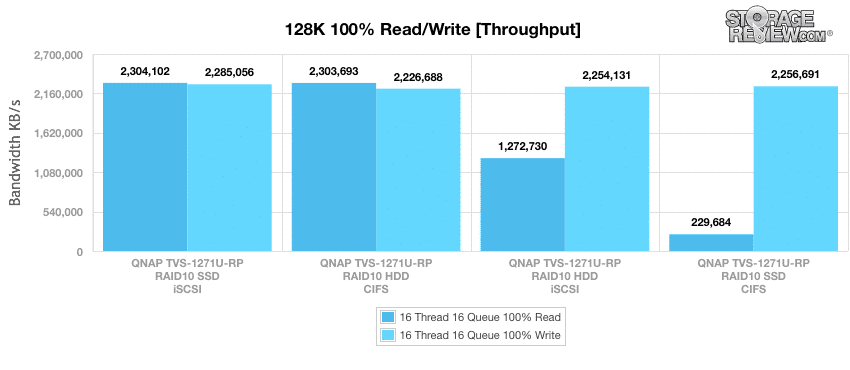
The QNAP TVS-1271U-RP is a 4th generation NAS storage solution designed for data backup, file synchronization, and remote access. Ideal for SMB use cases, it also features cross-platform file sharing, a wide-range of backup solutions, iSCSI and virtualization scenarios, as well as all kinds of practical business functions. The QNAP also includes abundant multimedia applications and a wide selection of different component options, all backed by impressive hardware specifications. The TVS-1271U-RP is also a highly scalable solution as it can support up to 1,120TB of raw capacity using multiple QNAP RAID expansion enclosures.
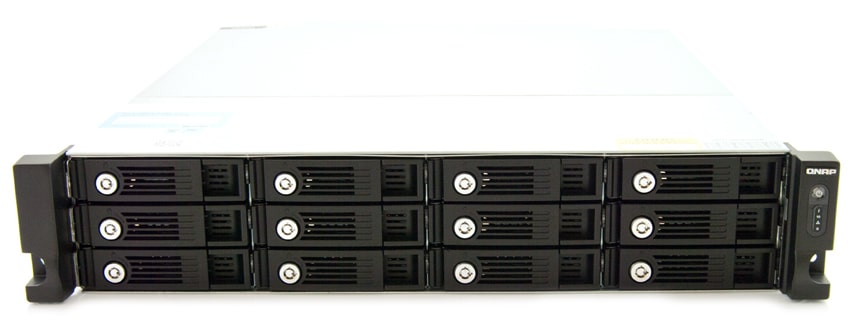
The TVS-1271U-RP is compatible with SATA 6Gbps drives, with QNAP quoting their NAS to deliver over 3,300MB/s in throughput and 162,000 IOPS. QNAP has also powered their TVS-1271U-RP with an Intel Haswell processor, including Pentium, Core i3, Core i5 and Core i7 options, which gives users the flexibly build their NAS based on individual needs. QNAP indicates that this will help to improve the efficiency of CPU-consuming tasks while serving more simultaneous tasks at once. To help boost IOPS performance, the TVS-1271U-RP supports two on-board internal cache ports, which can be equipped with the optional mSATA flash modules. In addition, QNAP offers an internal cache port design that will not use the space of a hard drive tray, which further increases the storage capacity of the TVS-1271U-RP.
Like all QNAP NAS solutions, TVS-1271U-RP is managed by the QTS intuitive user interface. Leveraging the latest version 4.2, this intelligent desktop allows for easy navigation and a ton of new features and enhancements. Users can also create desktop shortcuts or group shortcuts, monitor important system information in real-time, and open multiple application windows to run multiple tasks concurrently.
QNAP TVS-1271U-RP Specifications
- Form Factor: 2U, Rackmount
- Flash Memory: 512MB DOM
- Internal Cache Port: Two mSATA port on board for read caching
- Hard Drive: 12 x 3.5-inch SATA 6Gb/s, SATA 3Gb/s hard drive or 2.5-inch SATA, SSD hard drive
- Hard Disk Tray: 12 x hot-swappable and lockable tray
- LAN Port: 4 x Gigabit RJ-45 Ethernet port
- (Expandable up to 8 x 1 Gb LAN or 4 x 10 Gb + 4 x 1 Gb LAN by installing optional dual-port 10 Gb and 1 Gb network card)
- LED Indicators: Status, 10 GbE, LAN, storage expansion port status
- USB/eSATA:
- 4x USB 3.0 port (rear)
- 4x USB 2.0 port (rear)
- Support: USB printer, pen drive, USB hub, and USB UPS etc.
- HDMI: 1
- Buttons: Power button and reset button
- Alarm Buzzer: System warning
- Dimensions:
- 89(H) x 482(W) x 534(D) mm
- 3.5(H) x 18.98(W) x 21.02(D) inch
- Weight:
- 16.14 kg/ 35.58 lb (Net)
- 18.98 kg/ 41.84 lb (Gross)
- Sound Level (dB):
- Sound pressure (LpAm) (by stander positions): 45.0 dB
- (with 12 x HITACHI HUS724020ALA640 hard drive installed)
- Power Consumption (W)
- HDD Standby:
- TVS-1271U-RP-PT-4G: 88.88
- TVS-1271U-RP-i3-8G: 87.89
- TVS-1271U-RP-i5-16G: 88.91
- TVS-1271U-RP-i7-32G: 89.82
- In Operation:
- TVS-1271U-RP-PT-4G: 173.38
- TVS-1271U-RP-i3-8G: 176.27
- TVS-1271U-RP-i5-16G: 174.64
- TVS-1271U-RP-i7-32G: 176.42
- (with 12 x WD WD20EFRX hard drive installed)
- HDD Standby:
- Temperature: 0~40˚C
- Relative Humidity: 5~95% non-condensing, wet bulb: 27˚C.
- Power Supply
- Input: 100-240V~, 50-60Hz, 7A-3.5A
- Output: 500W
- PCIe Slot: 2 (1* PCIe Gen3 x8, 1* PCIe Gen3 x4)
- Fan: 3 x 7 cm smart cooling fan
Design and Build
Like all QNAP NAS solutions, the TVS- 1271U-RP has a fairly basic design with its all-metal chassis. There’s not too much to say about the front panel, as the vast majority of space is taken up by the 12 drive-bays (12 x 3.5-inch SATA 6Gb/s, SATA 3Gb/s hard drive or 2.5-inch SATA, SSD hard drives). To the far right is the power button and the Status, 10 GbE, LAN, storage expansion port status indicators.
Turning it around to the back panel shows a host of connection functionality and other features. On the front and center are the eight USB ports, four of which are 2.0 while the remaining four are 3.0. Just to the left is a tiny Password & Network Settings Reset Button while above are the four Gigabit LAN ports. An HDMI port is also located near the group with two redundant power supplies on the far right.
In addition, two expansion slots are visible (when not occupised with a 10G expansion card), allowing the unit to expand up to 1,120TB in raw capacity using a total of 140 hard drives with 8 expansion units. This is ideal for growing businesses and those that leverage a ton of data every day, such as with video surveillance, data archiving, TV broadcast storage, and other large-data applications.
The TVS- 1271U-RP supports the ANSI/EIA-RS-310-D rack mounting standards.
Testing Background and Comparables
We publish an inventory of our lab environment, an overview of the lab’s networking capabilities, and other details about our testing protocols so that administrators and those responsible for equipment acquisition can fairly gauge the conditions under which we have achieved the published results. None of our reviews are paid for or overseen by the manufacturer of equipment we are testing.
We tested the QNAP TVS-1271U-RP with the following drives in iSCSI block-level and CIFS file-level tests:
Application Performance Analysis
Our first benchmark of the QNAP TVS-1271U-RP is our Microsoft SQL Server OLTP Benchmark that simulates application workloads similar to those the QNAP TVS-1271U-RP and its comparables are designed to serve. For our application testing we are only looking at the Toshiba HK3R2 SSDs.
StorageReview’s Microsoft SQL Server OLTP testing protocol employs the current draft of the Transaction Processing Performance Council’s Benchmark C (TPC-C), an online transaction processing benchmark that simulates the activities found in complex application environments. The TPC-C benchmark comes closer than synthetic performance benchmarks to gauging the performance strengths and bottlenecks of storage infrastructure in database environments. Our SQL Server protocol uses a 685GB (3,000 scale) SQL Server database and measures the transactional performance and latency under a load of 15,000 virtual users.
Looking at the TPS performance for each VM, all were configured identically and performed well, with little disparity between them. The average overall performance was found to be 2,894 TPS. The difference between the he top performer, VM2 at 2,912.6 TPS, and the lowest performer, VM4 at 2,876.8 TPS, was 35.8 TPS.
When looking at average latency of the same test, results were mirrored; however, there was a bit more disparity between the configurations. The average was set at 441.0ms. The top performer, VM2 with a latency of 409.0ms, was only 62ms lower than the highest latency VM, VM4, with 471.0ms.
Our next set of benchmarks is the Sysbench test, which measures average TPS (Transactions Per Second), average latency, as well as average 99th percentile latency at a peak load of 32 threads.
In the average transactions per second benchmark, the TVS-1271U-RP gave us a performance of 2,047 TPS aggregate performance.
In average latency, we measured 64ms across all 4 VMs, with the spread being from 55ms at the lowest to 77ms at the highest, a difference of 22ms.
In terms of our worst-case MySQL latency scenario (99th percentile latency), the QNAP measured 327ms averaging all four 4 VMs.
Enterprise Synthetic Workload Analysis
Our Enterprise Synthetic Workload Analysis includes four profiles based on real-world tasks. These profiles have been developed to make it easier to compare to our past benchmarks as well as widely-published values such as max 4k read and write speed and 8k 70/30, which is commonly used for enterprise systems.
- 4k
- 100% Read or 100% Write
- 100% 4k
- 8K (Sequential)
- 100% Read or 100% Write
- 8k 70/30
- 70% Read, 30% Write
- 100% 8k
- 128k (Sequential)
- 100% Read or 100% Write
In the first of our enterprise workloads, we measured a long sample of random 4k performance with 100% write and 100% read activity to attain results from for this benchmark. In this scenario, the QNAP populated with SSDs recorded 135,464 IOPS read and 70,246 IOPS write when configured in iSCSI while CIFS connectivity saw just 22,588 IOPS read and 61,433 IOPS write. For comparison, the HDD configuration posted 10,524 IOPS and 4,788 IOPS (read and write, respectively) when configured in iSCSI.
As expected, the average latency benchmark results were much closer in performance. Here, the QNAP populated with SSDs posted an impressive 1.89ms read and 3.64ms write (iSCSI), whereas the HDD configuration posted 24.31ms read and 53.49ms write (iSCSI). As shown in our chart below, there was a large read latency spike when the HDDs were configured in CIFS (398.46ms).
Looking at results of the max latency benchmark the QNAP NAS populated with SSDs showed the best read performance (71.8ms/CIFS); however, it showed a huge spike in writes with 6,673.4ms. The best configuration for maximum latency in writes was the QNAP populated with HDDs using CIFS.
The SSD configurations in both iSCSI and CIFS showed good consistency, with 1.66ms read and 5.15ms write in iSCSI and 9.22ms read and 22.49ms write in CIFS. As far as the HDD configurations of the QNAP NAS go, our iSCSI block-level protocol showed the best standard deviation read latency while CIFS showed the best writes.
Our next benchmark measures 100% 8K sequential throughput with a 16T/16Q load in 100% read and 100% write operations. Here, the performance of all drives improved substantially, with the QNAP NAS configured in HDDs via CIFS showed the top read activity by a noticeable margin (158,454 IOPS). The QNAP NAS configured in iSCSI posted the top write performance (135,251 IOPS).
Compared to the fixed 16 thread, 16 queue max workload we performed in the 100% 4k write test, our mixed workload profiles scale the performance across a wide range of thread/queue combinations. In these tests, we span workload intensity from 2 threads and 2 queue up to 16 threads and 16 queue. The SSDs configured in iSCSI via the QNAP NAS posted the highest results; however, the iSCSI protocol had the least consistent results (though it reached the 80K IOPS mark). The QNAP HDD configurations had substantially lower IOPS, particularly in our CIFS file-level test.
Results were mirrored when looking at average latency, though the QNAP configured in with SSDs had much more stables results in iSCSI. The HDDs configured in iSCSI also outperformed CIFS for this benchmark, which had significant latency spikes.
Performance was a much more erratic overall from all of the QNAP NAS configurations tested in our max latency benchmark though iSCSI and CIFS were more in line with each other than in previous benchmarks. Overall, the QNAP NAS configured with SSDs in iSCSI showed the best max latency results.
The results of the standard deviation benchmark were virtually identical to the results of the average latency benchmark, with iSCSI outperforming CIFS in both HDD and SSD configurations.
Our last test in the Enterprise Synthetic Workload benchmarks looks at 128k large block sequential performance, which shows the highest sequential transfer speed the QNAP drive configurations. Looking at the 128k performance of 100% write and 100% read activity, all drives and configurations posted similar write numbers, all of which boasted near 2,200,00KB/s mark in writes. The QNAP NAS populated with SSDs and configured in iSCSI had the best read and write performance with 2,304,102KB/s and 2,285,056KB/s, respectively.
Conclusion
One of biggest assets of the QNAP TVS-1271U-RP is its ability to scale as businesses grow combined with ease of use. With a massive storage pool of to 1,120TB in raw capacity via multiple QNAP RAID expansion enclosures, the TVS-1271U-RP is able to satisfy almost any needs. On the hardware side, TVS-1271U-RP is able to leverage SATA 6Gbps drives, which provides a good combination of deployment options with affordable storage media. QNAP ships the TVS-1271U-RP with an Intel Haswell processor, which is available in Pentium, Core i3, Core i5 and Core i7 options. Coupling all of this with the integrated QTS management interface allows the TVS-1271U-RP NAS boast a mountain of flexibility and thus ideal for a wide variety of applications.
We tested the NAS with both HDDs and SSDs. We saw upwards of 135,464 IOPS read and 70,246 IOPS write in throughput performances, as well as and average latencies as low as 1.89ms read and 3.64ms write (both leveraging an iSCSI configuration using HK3R2 SSDs). In our 8K sequential benchmark we saw throughput performance of 158,454 IOPS read with the Seagate NAS HDD (CIFS) while the HK3R2 SSD gave us a write performance of 135,251 IOPS (iSCSI). Our HDD 128k large block sequential performance boasted impressive speeds, all of which all surpassed the 2.2GB/s as far as writes go, although SSD performance didn’t come out as well. The QNAP populated with SSDs offers strong mixed workload performance, but CIFS read measurements dropped far below its HDD counterpart, measuring 230MB/s.
Pros
- Good scalability
- SATA support offers lower cost drives
- Easy to configure and deploy
Cons
- Application performance wasn’t as strong as synthetic workloads
- Poor SSD iSCSI write performance in synthetic benchmarks
Bottom Line
The QNAP TVS-1271U-RP is a flexible SMB NAS that can cost-effectively scale as business needs grow.
Sign up for the StorageReview newsletter


